DUST VR | 2018-2023
“For dust we are and to data we shall return.”
#319, DUST VR
DUST uses virtual reality to represent and investigate the invisible sphere of urban particulate matter. We give representation to the recent developments of open data and citizen science and chip away at popular incognizance of just how much dust, and now data may impact our private lives.
It is estimated that one human life is lost prematurely every 5 seconds due to exposure to dust. Furthermore, it is estimated that one human life is lost prematurely every 8 minutes due to the exposure to dust originating from the production, delivery and consumption of digital data.
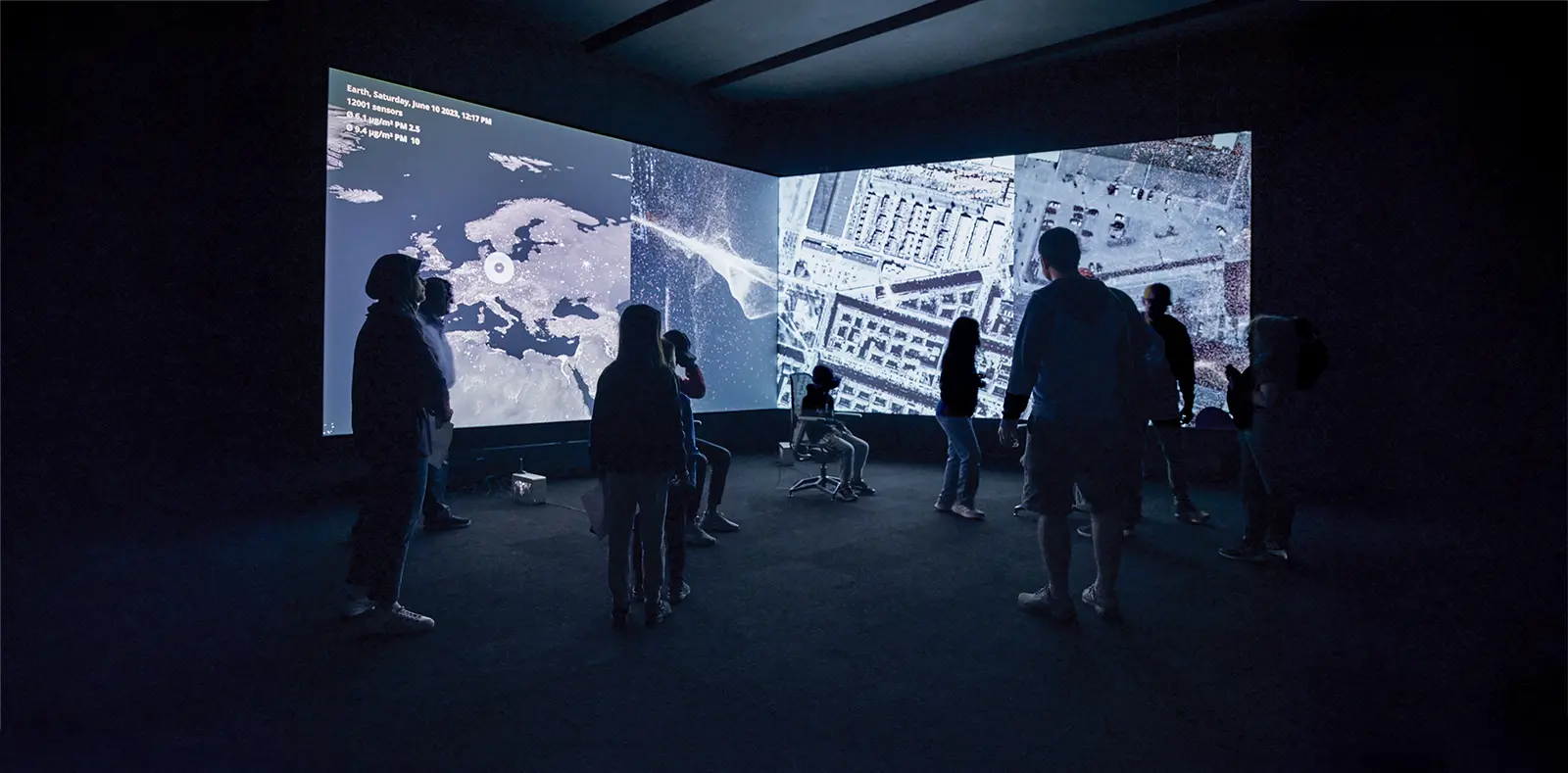
Immersive Networks: Virtual Reality & worldwide Civic Tech
Dust is Data – Data is Dust
Particulate matter, also known as airborne dust, is universally familiar. Volcanic ashes, sandstorms, forest fires, construction residue, vehicle and industrial emissions are among the largest contributors today, but the origins of the planet, all known species and the universe itself derive from dust borne by interstellar dust clouds.
Data Clouds – Data Dust
The singularity and omnipresence of dust is no longer unrivaled. In the new world, interstellar dust clouds may be overshadowed by virtual data clouds. Data has become the new essential building block. Much like dust, data is amorphous: sometimes filtered, sometimes free flowing. Like dust, data passes through us and all around us.

Sensors and Sovereignty
People have long understood dust may be harmful and have sought to avoid undue exposure. But until recently the definition and monitoring of the threat level depended on governments and institutions and the biases they bring to their assessment of costs and benefits.
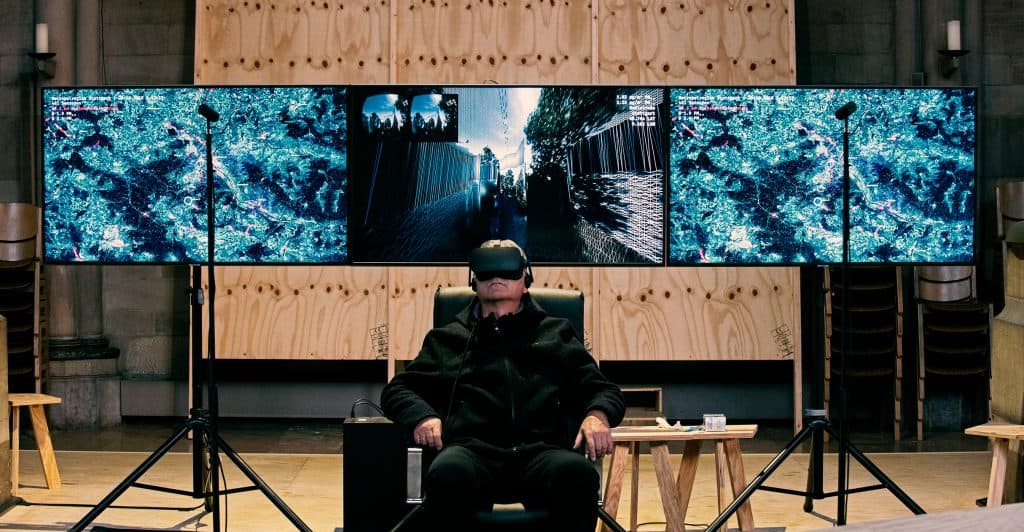
Curiously, data now empowers people to do their own cost-benefit analysis: individuals can carry out environmental tests privately with low cost sensors and distribute the results on the internet, bringing about a culture of civic tech. Our work DUST enables viewers to experience virtual exposure to microscopic matter suspended in the atmosphere.
“Using VR, a virtual space, artist Michael Saup has constructed an incredible realm of wonder, a world where reality and data merge. There eternity and instant coexist, virtuality and reality coexist, along with miracle and disillusion.”
Liu Chang – https://mp.weixin.qq.com/s?__biz=MzA3MzE3MjcyOA==&mid=2651342336&idx=1&sn=0e6c90116308f24a3fe2c5c50f807cb2
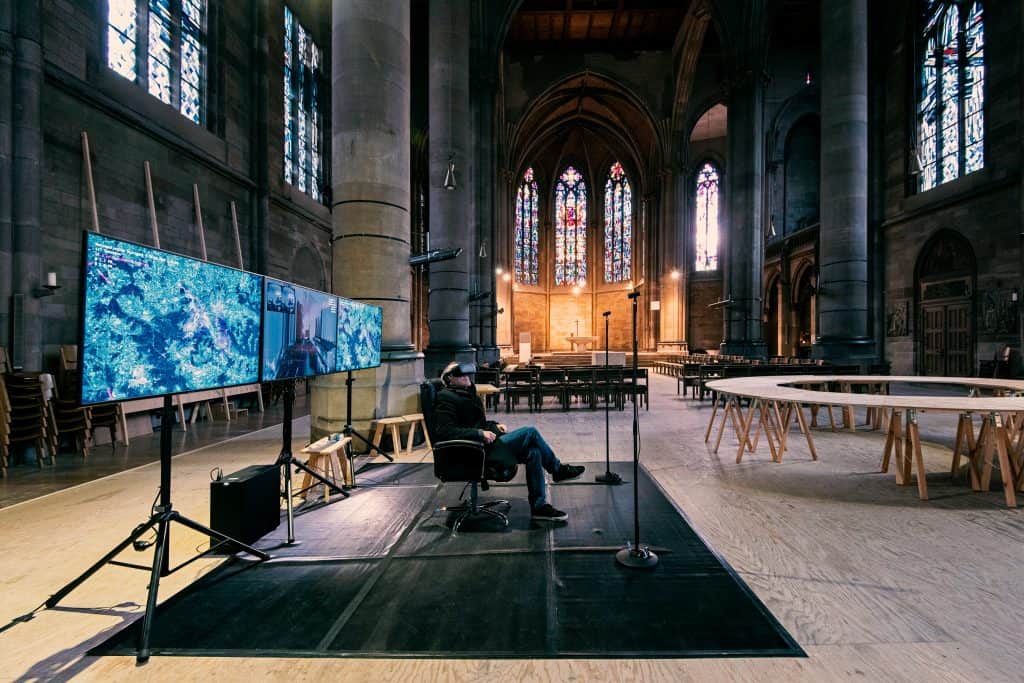
“Lifelike behaviors could be exhibited by dust particles suspended in a plasma”
Wikipedia on dusty plasma-based biology: nonplanetary non-chemical life

The outer panels of the triptych display a map with real time environmental data metrics such as air pollution, traffic density and radioactivity levels. A virtual reality head mounted display allows the viewer to visit the sites.
Vast amounts of data are not comprehensive as the majority of people don’t know how to apply such data and either wouldn’t have the time or inclination to use it. Therefore we aim to establish an open platform for monitoring, experiencing and communicating environmental data as meaningful information.
Many of us will produce, curate and consume such data in the very near future, promoting democratic benefits such as education, transparency and civic engagement.
Users enter an uncanny landscape that seamlessly blends street locations with real-time data collected by citizens. The result is a mesmerizing and, at times, unsettling aestheticized experience. Matevž Kolenc’s haunting score adds depth, creating a sci-fi atmosphere that underscores the very real threat of dust pollution on our future.
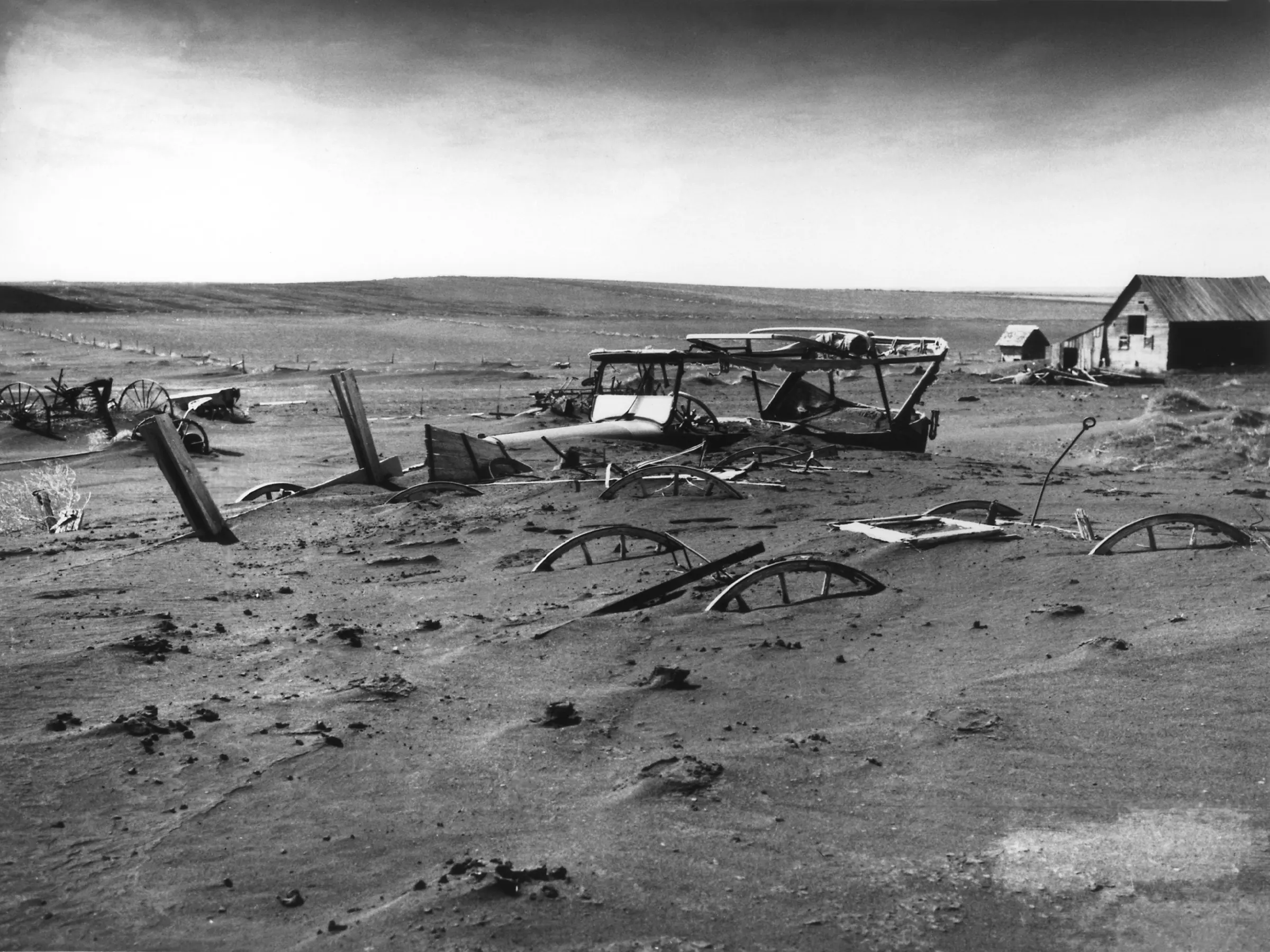
EXPERIENCE
The VR journey includes the ability to explore over 13,000 sensor locations worldwide, each contributing to real-time environmental data displayed as digital particles. These sensors offer a global perspective on the accumulation of particulate emissions in different locations.
As users delve into this immersive environment, virtual agents mimic the behavior of cars, people, bikes, and wind, disturbing the dust and revealing astonishing causal effects.
Beyond its technical complexity, “Dust VR” invites contemplation. It prompts reflection on mortality, dissolution, and the fleeting nature of existence. While the installation embodies a sense of mournfulness, it also celebrates the beauty that emerges and fades in our brief moments of existence.
As visitors experience Dust VR, they will be transported to a realm where reality and data converge, where the impermanence of life meets the enduring presence of dust. This experience challenges perceptions, offering a glimpse of the profound and eternal within the ephemeral, ultimately leaving audiences with a renewed sense of wonder about the world we inhabit.
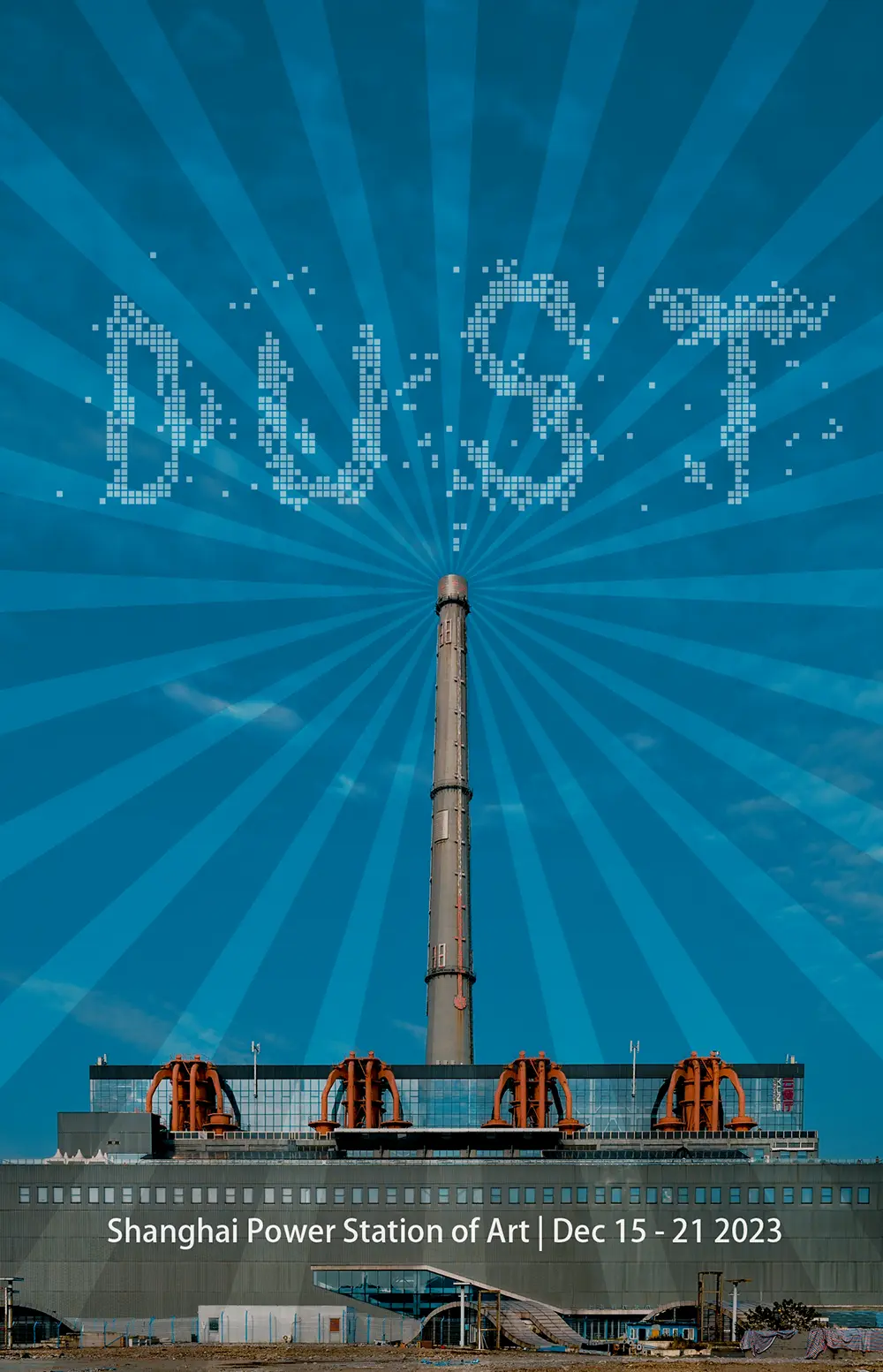
Authors
Michael Saup is an artist, instrumentalist, coder and filmmaker. He has acted as professor of digital media art at HfG/ZKM University in Germany and as the founding director of the Oasis Archive of the European Union. He is the co-founder of the Open Home Project, a humanitarian initiative to help people being affected by nuclear disaster. Amongst others, his work has been awarded by the Ars Electronica and the UNESCO Commission. Michael Saup’s work focuses on the underlying forces of nature and society; an ongoing research into what he calls the “Infossil Archaeology of Future”. His work, often in cooperation with other artists, has been shown widely in exhibitions, festivals and on stages around the world. He currently lives and works in Berlin.
Matevž Kolenc is a composer, arranger, producer and instrumentalist. He started his career as a music composer for theatre performances, but later became a driving force behind the band Melodrom with whom they released four full length studio albums between 2004 and 2010 (Nika records). Since 2012 he is also an active member of Laibach, for whom he writes, arranges and produces music. Most notably, he collaborated with Laibach on their albums “Spectre” and “Also sprach Zarathustra” (2017, Mute records), last being entirely his work, originally created for the purpose of a theatre performance by the same name (directed by Matjaž Berger), and later released as a full length album and also performed in rearranged version by Laibach with Lviv Philharmonic Orchestra (2018).
Jan Lutz of luftdaten.info together with Lukas Mocek, Pierre-Jean Guéno, Rajko Zschiegner and David Lackovic of Sensor.Community established a contributors driven global sensor network that creates Open Environmental Data. The mission of Sensor.Community is to inspire and enrich people’s lives by offering a platform for the collective curiosity in nature that is genuine, joyful and positive. The network consists of sensors that are built by individuals and communities around the world. These sensors are used to measure environmental data such as temperature, humidity, air pressure, and air quality. The data collected by these sensors is then made available to everyone through an open data platform. The platform allows users to access real-time environmental data from around the world. This data can be used for research, education, and advocacy purposes.
https://sensor.community/de/contributors/
aporee.org has, over the years, curated a comprehensive collection of sounds from around the world, thanks to the contributions of a diverse community of artists, phonographers, and sound enthusiasts. This platform not only serves as a repository for soundscapes but also provides collaborative tools for artistic practices and research in the field. Beyond its primary functions of collecting, archiving, and sound-mapping, radio aporee engages in boundary-pushing experiments across different media and public spaces.
https://aporee.org/aporee.html
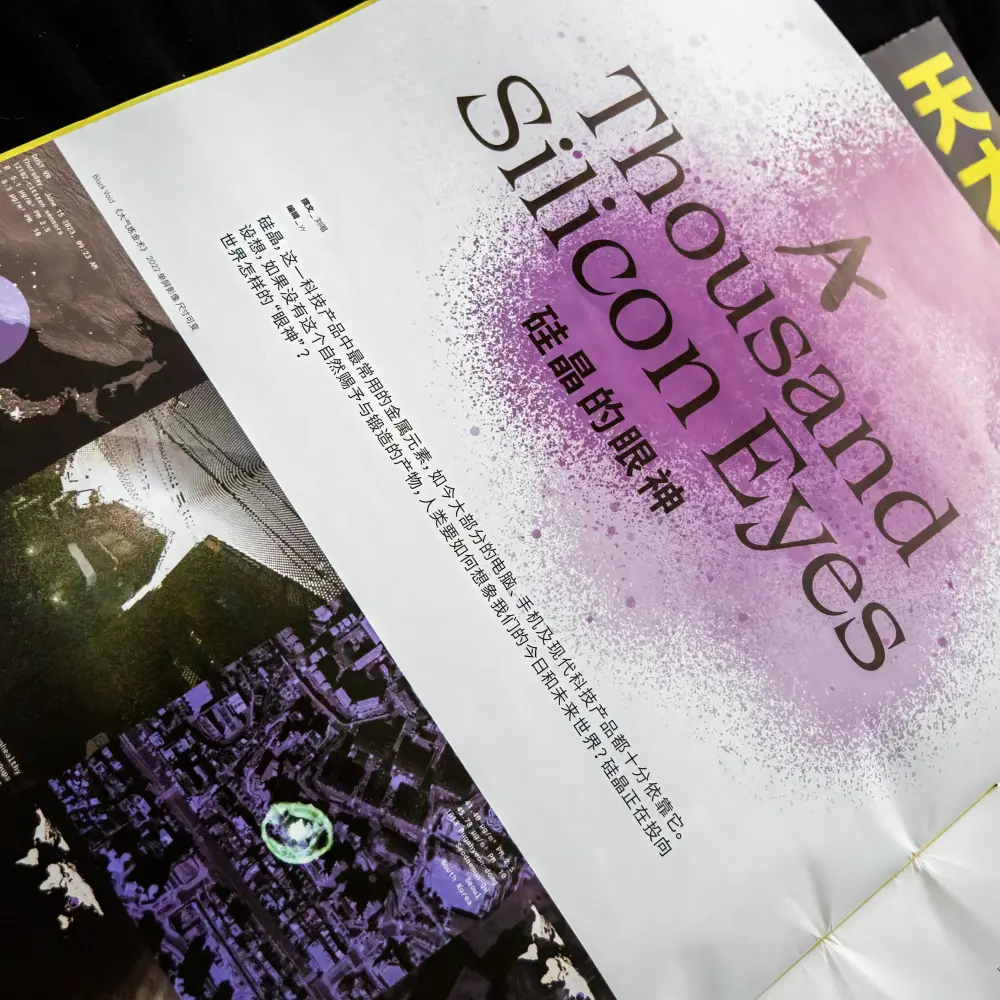
Shows
- St Maria Kirche Stuttgart, Germany
- October 10, 2018
- Oval Office, Schauspielhaus Bochum, Germany
- December 13, 2018
- Citylab Berlin 2019-2020, Germany
- June 13, 2019
- The Future of Technology for Sustainable Development, GIZ, Berlin, Germany
- October 22, 2019
- Glowing Globe, Rijeka, Croatia
- November 13, 2019
- Transport & Climate Change Week, Berlin, Germany
- March 5, 2020
- Laibach 40th Anniversary, Trbovlje, Slovenia
- (cancelled due to covid pandemic)
- speculum artium, Trbovlje, Slovenia
- October 15, 2020
- Deutsche Welle TV – Eco India – The Environment Magazine Sustainable Cities, Mumbai, India
- December 18, 2020
- Particles EP, Matevz Kolenc, Nature scene records, Ljubljana & London
- July 23, 2021
- DIVE Festival, Planetarium Bochum, Germany
- November 4, 2021
- Generalkonsulat Wrocław, Poland
- September 3, 2022
- Ein Wochenende fürs Klima, Planetarium Bochum, Germany
- November 19, 2022
- Pochen Chemnitz, Germany
- September 29, 2022
- New Media Gallery, New Westminster, Vancouver, Canada
- June 4, 2023
- NOWNESS Genius Project, Cinema in Meta, 硅晶的眼神 , Shanghai Power Station of Art, China
- December 15, 2023
Credits
- Co-produced by Drehmoment – KulturRegion Stuttgart curated by Benjamin Heidersberger and inspired by luftdaten.info
- Supported by St Maria Kirche Stuttgart & Andréas Hofstetter-Straka
- Supported by High Performance Computing Center Stuttgart (HLRS)
- Supported by Oval Office, Schauspielhaus Bochum curated by Tobias Staab
- Supported by Pochen Chemnitz and European Capital of Culture 2025
- Barnaby W.V. Stewart, Foresight & Perspective
- with the help of Andrea Winter, Andreas Erhart, Dietmar Offenhuber
- created with C++, Meshlab, QGIS and openFrameworks
- environmanetal data feeds by https://sensor.community (formerly known as luftdaten.info)
- pointclouds by https://www.google.com, fair use for cultural and educational purposes
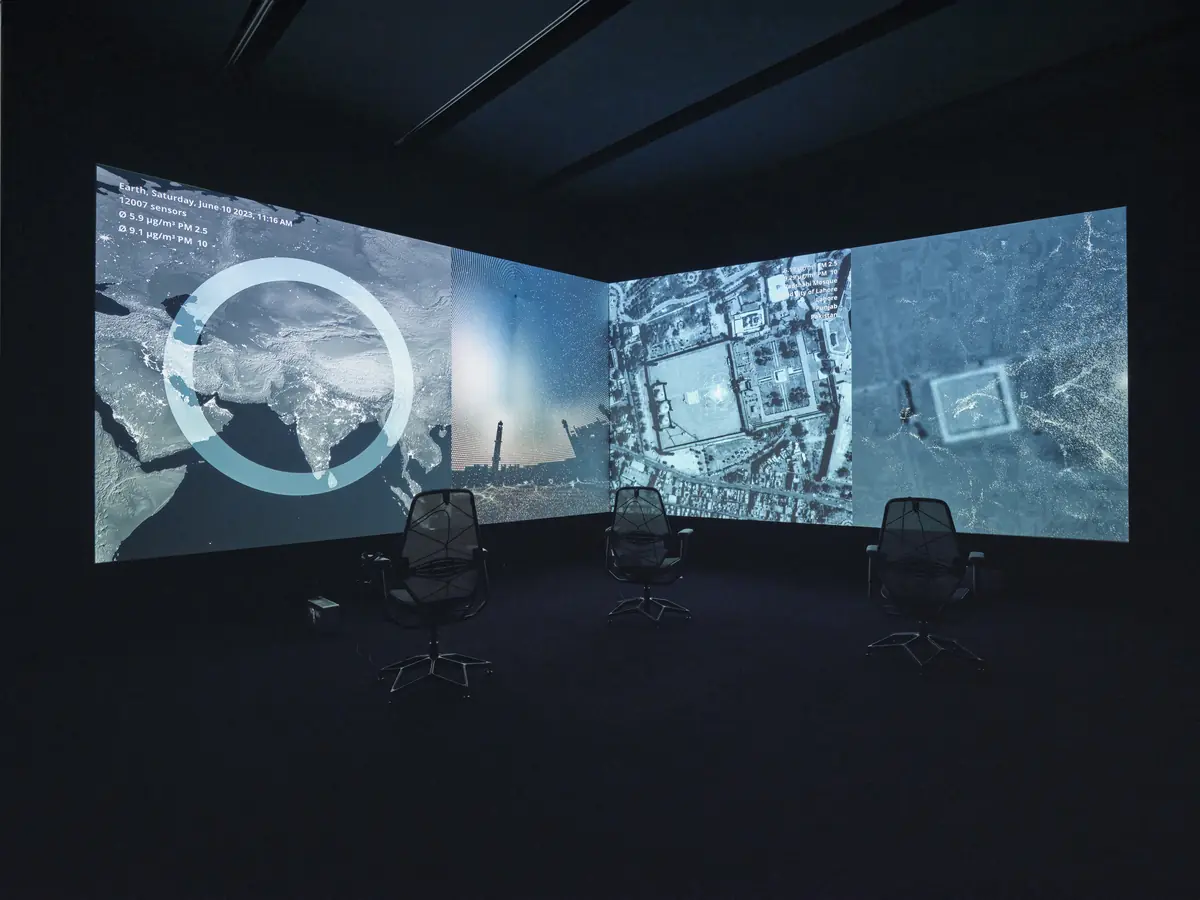
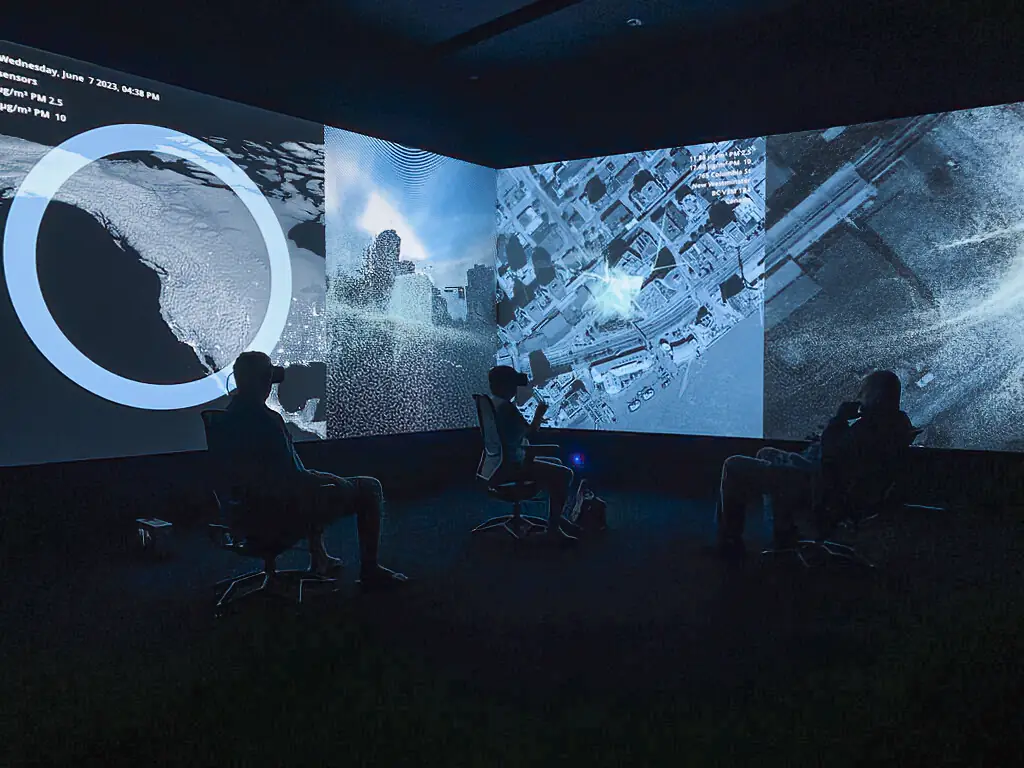

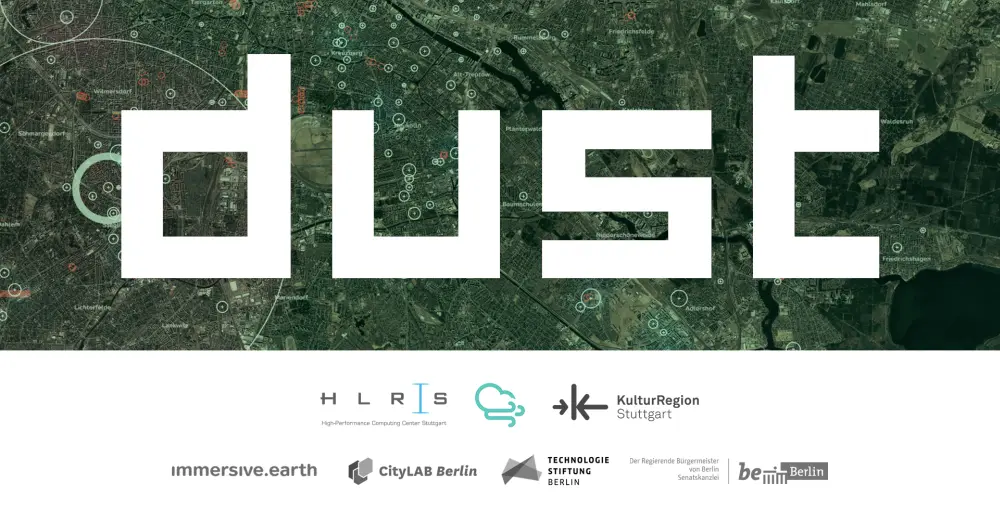
5 thoughts on “DUST VR | 2018-2023”
Comments are closed.